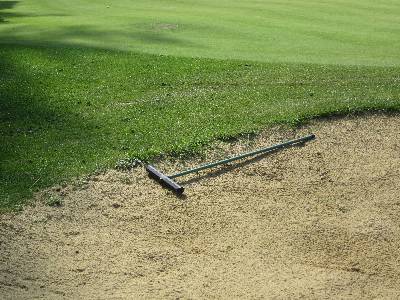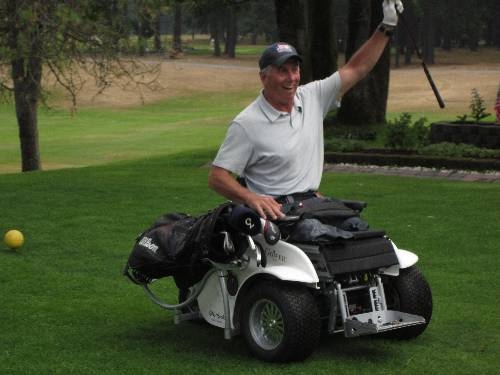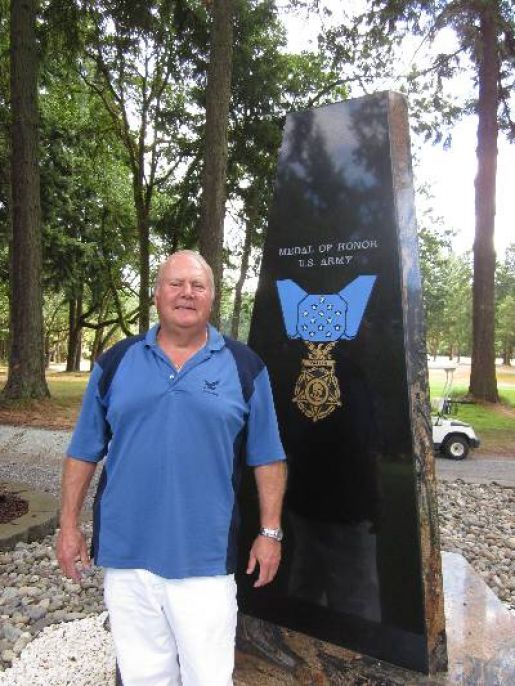You might also be interested in...
-
A course in good design
11/11/2011
-
Architect is visionary for the blind
05/16/2011
-
As you winterize your home, “futurize” it, too!
01/14/2014
-
Designed for All: Universal Design Living Laboratory, the National Demonstration Home & Garden
05/06/2013
-
Designing a university for all
03/07/2012
-
Easy living on the farm
10/28/2012
-
Existing homes can be friendlier to aging
10/08/2013
-
He made his home age-friendly
08/06/2013
-
Improving on good design to Age in Place
10/23/2013
-
Livable Communities
10/22/2013
A course in good design
Posted: 11/11/2011
By: Monika Weiss
After government funding for veterans golf courses ends in 1995, the American Lake Veterans Golf Course, like many others across the nation, falls into disrepair. Once a respite for patients of the neighboring VA hospital now serving Joint Base Lewis-McChord near Tacoma, and in a time of growing need as a perpetual wave of wounded warriors returns from wars in Iraq and Afghanistan, one group of volunteers takes on the efforts to restore it to make a place for rehabilitation. Some of these same volunteers, no longer able to walk the course, serve as inspiration to create a place for ALL vets, pioneering a plan for creating the first accessible golf course in America.
One bright morning this fall, I walked a round of nine holes with the regular Friday women’s group made up of both veterans and volunteers. I stopped to chat with a group of older gentlemen playing ahead of the ladies. Although only my second time out to American Lake, I knew that this was not a place short on good stories.

Usual Friday partners Stephanie (left) and Geri watch as Christine sinks her putt. Stephanie and Christine are both veterans while Geri is a regular volunteer.
I explained my interest in the accessibility of the course to one of the golfers, while complementing his game. “Well, I’ve only been playing golf a short time. I’m really a skier,” explained Vietnam veteran Jim Martinson. “So you sit ski?” I asked. “I invented the sit ski.” Jim went on to mention how he invented the race wheelchair as well. If this sounds a bit boastful, then you should see his resume which includes gold medalist of two Paralympics, history’s oldest X-games competitor and Boston Marathon winner. The Friday ladies banter outed him as a good dancer as well; it was Geri who recalled seeing him with his wife at last year’s Christmas party.
“We ask a lot of him,” Korean Navy vet Harold “Pepper” Roberts said of Jim, one of his regular golfing buddies. He explained how Martinson serves as somewhat of a poster boy around the course. See, although Jim may be fairly new to golf, his accomplishments in the 40 plus years since losing both legs above the knee in Vietnam make him a great mentor for the hundreds of soldiers of varying disabilities whose rehab at the facility next door will include learning or relearning the game of golf. Meanwhile, Jim benefits from the design features that make the course playable for him, along with the use of one of the club’s riders. Finally, something he did not have to invent himself!
Roberts, on the other hand, has had a big hand in making accessibility a design priority at the course. After retiring in 2001 from careers in teaching and business, Pepper began volunteering at the course. It was during the work to replace the old irrigation system that Roberts talked to one volunteers who had not been able to play the course because he could no longer walk it. Roberts’ funding efforts soon provided golf carts for the course and began him thinking about the importance for the course to be usable to all veterans. In 2004, Roberts formed the non-profit “Friends of American Lake Veterans Golf Course” as a way to ignite funding efforts for the three-phase campaign, now in its final phase.

All maintenance of this beautiful course-including mowing greens and fairways, edging and planting, as well as administrative work-is done by volunteers. The benefit of a mostly military volunteer force is the self-discipline that comes with it.
Accessible Features
Completing Phase I went a long ways in making the American Lake vision as accessible for all vets a reality. A $135,000 investment was made in Solo-Riders, riding carts that have a swivel seat that supports the weight of a golfer without fear of tipping as he swings. Clubs ride in front on the hood for easy access. A new covered driving range was built with wider tee boxes to accommodate someone in a Solo-Rider.

A Golden Donation
Despite the care provided by some 200 volunteers, the strain of over 25,000 rounds of golf played in one year takes a toll on this 9-hole course mobilizing the efforts of another committee member, retired professional golfer Ken Still. He called on his 1969 Ryder Cup teammate Jack Nicklaus to develop the adjacent land into a back nine, to which Nicklaus agreed. To help complete Phase III of a project known as “A Course in Courage: Healing America’s Veterans through Golf,” the “Golden Bear” arrived at American Lake in June of 2010 to map out plans for the back 9, making adjustments like trading deep sand traps with steep lips commonly found along the more than 350 other courses by Nicklaus Designs for shallower ones accessible to someone using a rider.
A course of their own: true heroes
Army vet Roger Gatts stands in front of the marker at American Lake’s signature hole-3. Each hole is named after military medals, with special markers recognizing the heroes who have served and sacrificed; hole-3 celebrates the highest military decoration awarded by the United States government, the Medal of Honor.
For anyone who thinks that Jack Nicklaus is the big story around here, just come spend a few hours socializing in the newly built Rehabilitation Center/club house or one day out on the course. As Assistant Course Manager Roger Gatts zipped me around to see the front nine, I heard the stories of many course regulars, like the two remaining survivors of the Omaha Beach landing. I was lucky enough to meet Leenon "Red" Burton from the second wave, along with Mrs. Burton. Veterean Lyle Hanks made the first wave and spent a harrowing night on the beach, wounded, waiting for his fellow soldiers to return for him the next day. Roger also introduced me to Nolan Goudeaux, a Vietnam JAG vet with a smile and a charm equally infectious. He hopped a ride in our cart while I told him about my brother Eric being a JAG vet of Iraq.
In the Rehab center I met Henry, a former security guard at the VA Hospital across the street. He showed me a binder he keeps of all the vets who come through and estimates that they have trained some 30 blind golfers, including four they were sending to an upcoming tournament in Iowa. The volunteers host events for homeless vets and their families and have put on a picnic for the psych ward patients. These volunteers and visitors make up the real story behind American Lake.

Henry stands in front of the simulator demonstrating how it works using the same clubs the student will later use on the course.
As the United States winds down in Iraq and as we see more and more wounded in Afghanistan, naturally more new golfers will find their way to American Lake. Roger told me one of their newest members was a quadriplegic vet. They were not yet sure how they were going to teach him to play, Roger said, but as long as he didn’t give up, they would not give up on him. I don’t doubt that they will find because this is a place designed for ALL veterans.
Some additional information on the American Lake Golf Course:
The American Lake Veterans Golf Course
9600 Veterans Drive
Lakewood, WA 98493
(253) 589-1998
The course is a nine-hole layout with two par-3s and one par-5. With two sets of tees, you can play 18 holes for a par 71 if you go around twice, and the distance varies from side to side. Hospital in-patients take first priority and their greens fees are free as is their training. As a part of their fundraising efforts, on April 16th, 2012 the Friends of American Lake will be raffling off a '56 Chevy Bel Air. Click here for information on entering.
Special thanks to my hosts Bruce McKenty, Jim Sims, Linda LaMonica and especially to Roger Gatts who spent hours driving me around the course so I could see its accessible design features and meet the veterans and volunteers who make up the American Lake family.
NOTE: Architect Michael Graves and the design firm IDEO have partnered with Clark Realty Capital to design The Wounded Warrior home at the U.S. Army Fort Belvoir.
Useful Resources:
- You can find more pictures on our Facebook page
- Friends of American Lake Veterans Golf Course
- Chris Connelly of ESPN's Over The Line narrarates American Lake story
- To make an online contribution to American Lake Veterans Golf Course

